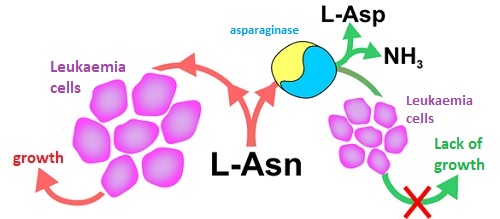
The acute lymphoblastic leukaemia, that is, a cancer of the circulatory system is the most common type of leukaemia in children. The illness progresses rapidly and, if left untreated, the patient dies after several months. Some methods of treatment against this type of leukaemia have been known and used for more than 50 years, yet their side effects often lead to serious health problems. Researchers from the Jagiellonian University Faculty of Chemistry led by Dr Joanna Loch are launching a project to search for new ways of treatment for this type of cancer.
The acute lymphoblastic leukaemia (ALL) is one of the most frequent paediatric cancers, which also occurs in adults. According to the latest data from the Polish Agency for Health Technology Assessment and Tariff System, the prevalence of the disease is 2 cases per 100,000 people a year (20-25 percent of the patients are adults and the illness most frequently occurs in children aged 2-5 years) [1]. The ALL is a cancer originating in the bone marrow, which is responsible for the production of blood cells. As a result of genetic mutation, the work of bone marrow becomes disrupted, which leads to uncontrolled and excessive production of some types of white blood cells, which replace other important cells in blood, disrupting the functioning of the whole body and causing such symptoms as severe fatigue, compromised immunity or bleeding resulting in the appearance of bruises.
All proteins which constitute the human body consist of amino acids. They play a very important role since the lack of even one of them may disrupt the functioning of cells, which can lead to their death. This is also the case of leukaemia cells in bone marrow. Fortunately, these cells are unable to produce the amino-acid known as L-asparagine (L-Asn), so in order to survive these cancer cells need to be supplied with L-Asn from blood plasma, which contains nutrients and other substances essential for the proper functioning of the body, including amino acids, such as L-Asn. Consequently, removing this amino acid from blood plasma should cut the supply of this substance to a cancer cell, thus leading to its “starvation”. This intervention doesn’t significantly affect the functioning of healthy cells, as they can independently produce the vital amino-acid L-Asn.

One of the possible ways of treatment of acute lymphoblastic leukaemia consists in “annihilating” L-Asn in blood plasma. To reach this goal researchers and physicians use a special enzyme called L-asparaginase, which is capable of breaking down L-Asn amino-acid into “harmless” L-aspartic acid (L-Asp) and ammoniac. These enzymes have been used to treat leukaemia since the 1970s. Yet they also cause serious side-effects and are badly tolerated by adult patients.
To overcome this impasse, scientists from the JU Faculty of Chemistry who are part of NCN SONATA BIS will search for new-generation L-asparaginases among plant enzymes, as their molecules have a unique structure which allows them to create enzymes consisting of parts of sequences originating from different species (known as chimera enzymes). These chimeras are created by selecting the best parts of natural enzymes present in various organisms. For instance, selected parts of an enzyme from E. coli bacteria, responsible for its stability, can be combined with parts of an enzyme present in beans, which enables its high activity. This ingenious procedure allows the creation of a “super-molecule” consisting of the best fragments of the original enzymes.
As the production of such chimera enzymes opens up fascinating possibilities of building molecules with completely new functions and properties, the scientists believe that their project will lead to the development of new “prototypical” L-asparaginases which will enable more effective treatment for leukaemia in both children and adults in the near future.
The project will be carried out in collaboration with the Centre for Biocrystallographic Research at the Institute of Bioorganic Chemistry in Poznań. The research will be funded within the framework of the project N NCN 2020/38/E/NZ1/00035.
[1] Data published on 25 January 2021 by the Transparency Council of the Agency for Health Technology Assessment and Tariff System
Original text: www.nauka.uj.edu.pl





